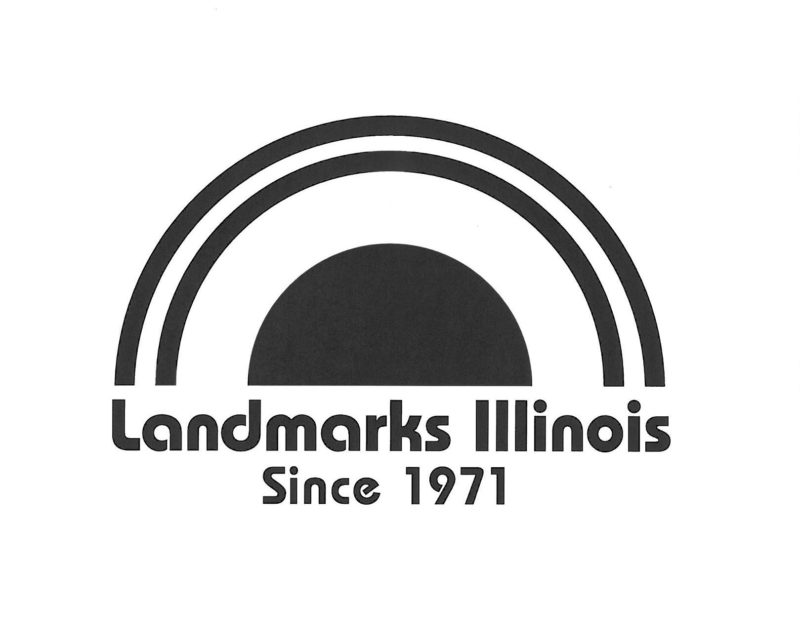October 13, 2021
(This is an extended version of an article that first appeared in our August 2021 edition of The Arch newsletter.)
The demolition of Adler and Sullivan’s Chicago Stock Exchange Building sparked the creation of Landmarks Illinois in 1971. The former arched entrance to the building, preserved today at the Chicago Art Institute, has continued to inspire our branding over the past five decades. Below, we share insights from two artists who have used the architecturally significant arch to create artwork for Landmarks Illinois.
VICKI GRANACKI
Vicki spent decades volunteering for Landmarks Illinois, including serving as a board member, Vice President of the former Chicago Programs Committee and as Layout Editor for early editions of the LPCI print newsletters. Perhaps the most enduring mark she left on the early days of the organization was creating its first logo — the rainbow-esque triple arch symbol (pictured above) that is still celebrated today and was resurrected this year for limited edition 50th Anniversary t-shirts and as inspiration for our 50Forward branding.
Landmarks Illinois: Tell us how you first got involved with Landmarks Illinois.
VICKI GRANACKI: In the fall of 1971, I got a job at Consolidated Book Publishers, located at 1727 S. Indiana Ave., and spotted a poster to “Save the Old Stock Exchange.” Newly steeped in European historical architecture following a recent 10+ month adventure in London, I was unschooled in Chicago’s architectural heritage but primed to get involved. The industrial loft I toiled in was just around the corner from Glessner House where Richard and Joan Miller (who founded Landmarks Illinois – then called Landmarks Preservation Council) were pasting together a fledgling preservation movement. I soon found myself spending lunch hours with Joan in a small upstairs office making protest signs.
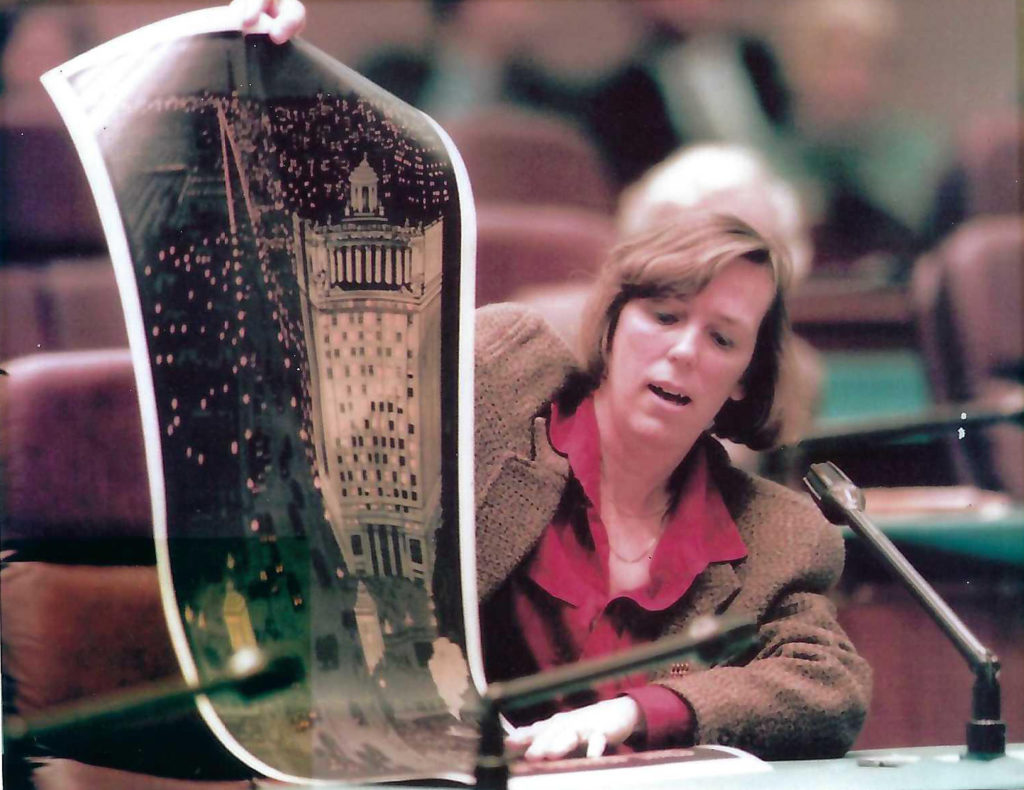
(Granacki holding up a poster of the London Guarantee Building at a Chicago City Council meeting in April 1996, advocating for its landmarking. Courtesy Vicki Granacki)
LI: How did you create the original logo for Landmarks Illinois, then called Landmarks Preservation Council of Illinois (LPCI)?
VG: The original LPCI logo I designed in 1973 was inspired by the Chicago Stock Exchange arch, in a lean, minimal style so prevalent in the 50s and 60s when I got my art education. I used a simple, old-fashioned, ruling pen, which was a metal, pronged instrument with a tightening screw to adjust the width of the lines. I had to fill it every few strokes with India ink dripped off a small paint brush. The pen attached to a compass to get perfect semi-circles. I drew an about 8-inch diameter on smooth, hot press Bristol board so any bumps in the lines could be painted out with white paint and not be visible when the original art was scaled down. With Richard Miller’s enthusiastic approval, I prepared “camera-ready” art.
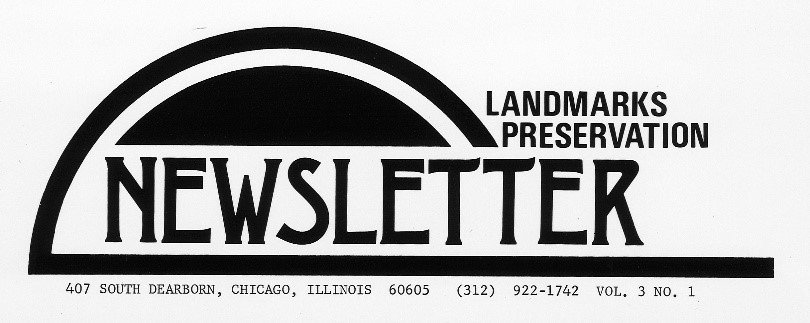
(Granacki worked on the first editions of LPCI’s print newsletters.)
LI: What is your reaction to hearing how people continue to respond positively to your design of the original logo?
VG: That first logo was later replaced with a more elaborate drawing of the Chicago Stock Exchange arch. But these days, with “Mid-century Modern” coming back into fashion, I’m pleased to see my original design appreciated once again. It is especially fun to see it on 50th anniversary swag.
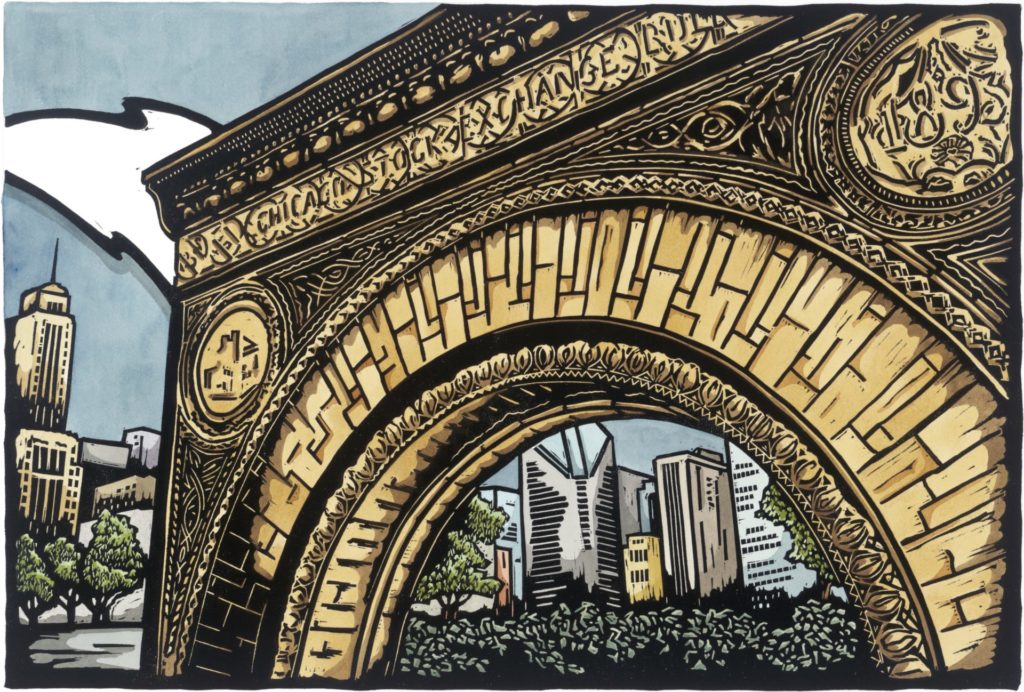
(Jill Kramer’s limited edition print of the Arch that is produced from carved linoleum.)
JILL KRAMER
Landmarks Illinois commissioned Oak Park-based artist/printmaker Jill Kramer to create a modern interpretation of the iconic Stock Exchange Building arch as a limited edition print that is produced from carved linoleum. A small number of original prints are still available for purchase at www.jillakramer.com.
LANDMARKS ILLINOIS: How did you feel using the Chicago Stock Exchange arch — an iconic symbol of ours for 50 years — as inspiration for your piece?
JK: There was a lot of self-imposed pressure to make certain that this piece could accurately represent something so very iconic to Chicago and its history. I think my perspective of the image (literally and figuratively) conveys that. I wanted the arch to feel heavier and more imposing than the buildings in the background, and in turn, more important in a way.
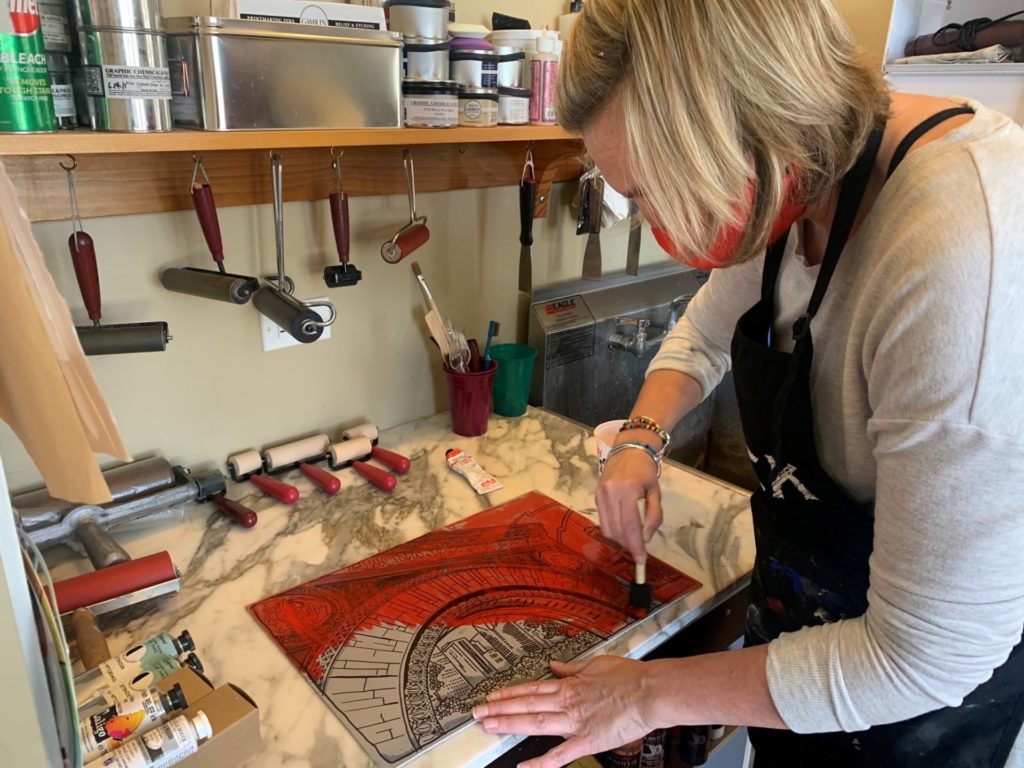
(Jill Kramer works on the custom Landmarks Illinois piece at her studio.)
LI: What did you find particularly inspiring or unique about the arch and how did you aim to capture that in your artwork?
JK: I had forgotten how detailed the stone work and carving was. It was a bit intimidating at first. I wanted to convey the detail of the arch without getting weighed down by the limitations of the material I was using. Linoleum can only be carved so thinly without becoming delicate. And I think the arch itself is delicate, albeit made of stone. There is such a wonderful balance of weighty-ness in material and delicate detail in the carving that I think makes this so special. Achieving a similar balance was my goal.
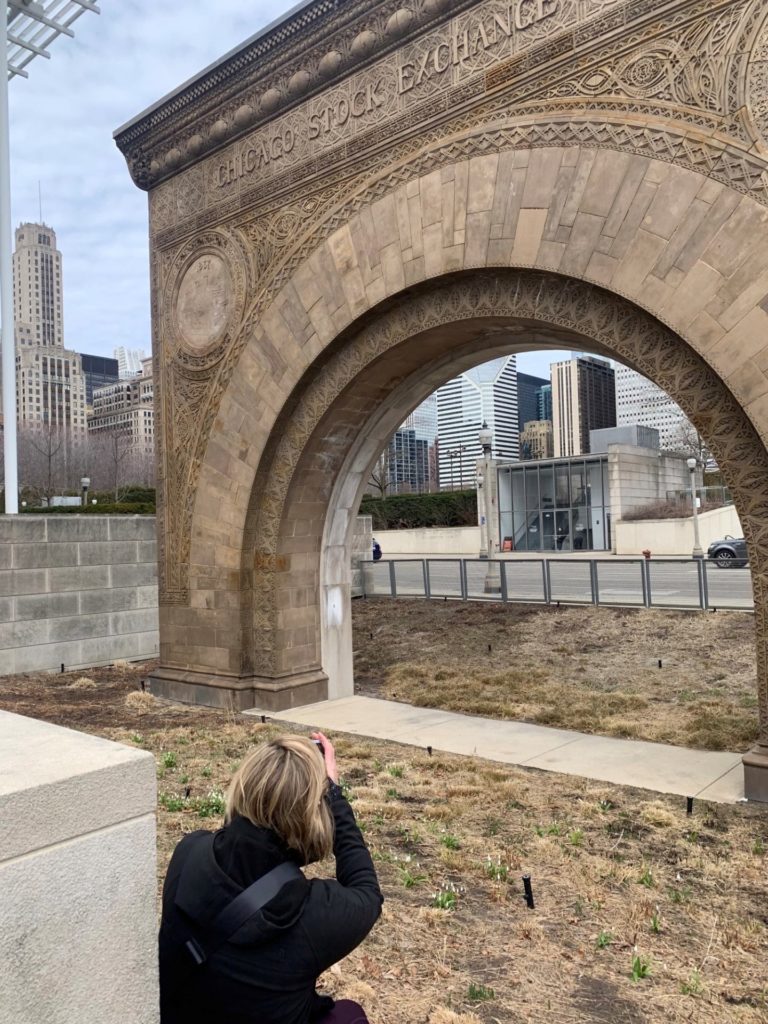
(Kramer photographing the Arch in early March 2021 to use as a reference for creating her custom art.)
LI: Your artwork often involves historic buildings and celebrates architecture. What inspires you to focus on the built environment as subject matter?
JK: I have always had a love of history and architecture. The arch is a perfect example of the detail and decoration that it very hard to find in much of contemporary architecture. I am drawn to that kind of detail where the hand of the artist or creator can be seen or felt. I also think the stories that historic architecture tell are so very interesting. Much like the rural landscape, architectural gems like the Old Stock Exchange Arch are often overlooked, removed, seen as old, unimportant or not worth saving. I disagree. Those “old buildings” are who we are in way. It is where we came from as a society.

